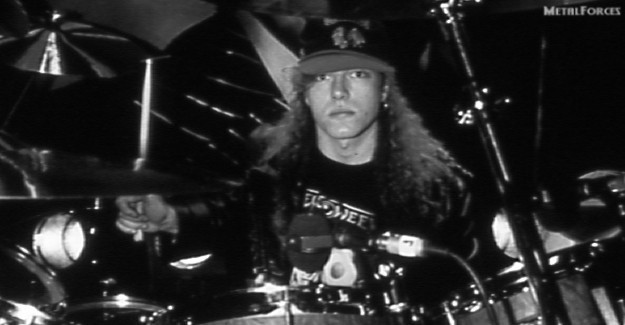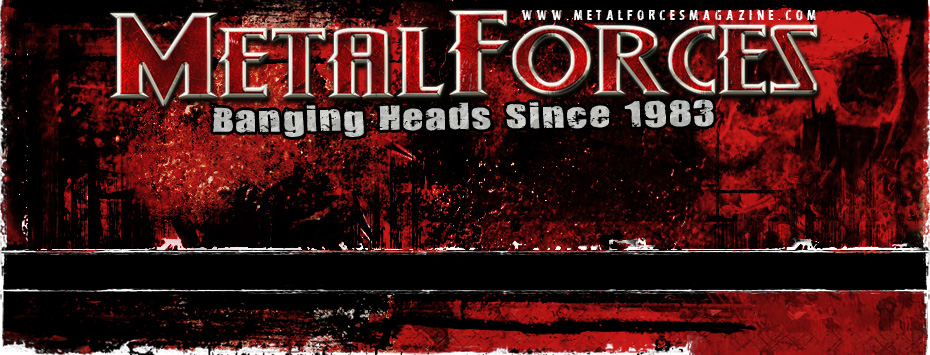
HELLOWEEN: Former Drummer Ingo Schwichtenberg Dies Aged 29
March 8th, 1995

|
Ingo Schwichtenberg, former drummer for Helloween, died on March 8th, 1995. He was 29 years old. Schwichtenberg committed suicide by jumping in front of a subway train.
Ingo Schwichtenberg was born on May 18th, 1965 in Hamburg, Germany.
In 1979 at the age of 14, Schwichtenberg took clarinet lessons as a result of encouragement from a school music teacher, and began playing folk music in a school band.
The following year, his father bought him his first drumkit. That same year, Schwichtenberg met Kai Hansen, member of the band Gentry. Becoming friends, he was invited to join the band as a drummer. Rounding out Gentry were bassist Markus Grosskopf and vocalist Piet Sielck (later of Iron Savior), the group right afterwards revising their moniker to Second Hell.
By 1982, Second Hell once again changed its name, adopting the title Iron Fist. In a bid to buy a professional drumkit, Schwichtenberg took various jobs, including working at a common office for a period of two years as well as working in a market in Hamburg.
In 1984, while watching the movie Halloween (1978), the drummer got the idea to change the band’s name yet again, the letter A being changed to E, thus becoming Helloween. By that time, Hansen had taken up the additional duties of handling vocals.
A mini-tour of small clubs in Hamburg was conducted, with Helloween cutting two tracks for the sampler Death Metal, issued via Noise Records. The likes of Hellhammer, Running Wild and Dark Avenger appeared, the tracks in question being ‘Oernst Of Life’ and ‘Metal Invaders’. A faster rendition of ‘Metal Invaders’ later appeared on Helloween’s full-length debut.
Noise Records signed Helloween in late 1984. A five-track self-titled EP was recorded between January and February 1985 at Musiclab Studio in Berlin, Germany, with mixing and production from Harris Johns, the EP emerging in April.
Helloween returned to Musiclab between September and October and re-teamed with Johns, the resultant effort arriving in December 1985 as Walls Of Jericho.
In November 1986 while touring across Europe, Kai Hansen encountered difficulties in simultaneously singing and playing guitar. Searching for a new vocalist, Michael Kiske was recruited from a local Hamburg outfited named Ill Prophecy. That month in November, Helloween began recording sessions for Keeper Of The Seven Keys: Part I at Horus Sound Studio in Hannover, Germany with producer Tommy Newton. Sessions concluded in January 1987, the album emerging in May. A European tour with Overkill followed, as well as a United States trek with Armored Saint and Grim Reaper.
Recorded between May and June 1988, successor Keeper Of The Seven Keys: Part II was issued in August. The single ‘I Want Out’ was featured on MTV, with Helloween supporting Anthrax on the first instalment of the Headbangers Ball Tour.
Kai Hansen left in 1989 following the European leg of the tour, due to various issues, including band conflicts, issues with Noise Records, and so forth. Hansen soon thereafter formed Gamma Ray. Michael Weikath selected Roland Grapow as Hansen’s replacement, who was earning a living as a mechanic.
Debut live offering Live In The U.K., released as Keepers Live in some other countries, came in November 1989. Issues with Noise Records emerged, with litigation taking place, Helloween and Noise Records eventually parting ways.
Laid down during 1990 at PUK-Studios in Gjerlev, Denmark with producer Chris Tsangarides, Pink Bubbles Go Ape surfaced in March 1991 under EMI. The full-length marked a change in style, which was less commercially successfully. May 1993 follow-up Chameleon was recorded in 1992 at Chateau du Pape, Hamburg, Germany with Tommy Hansen, continuing the trend.
Mental health as well as drug issues took their toll on Schwichtenberg, and so he was fired from the group. Riad Abdel-Nabi covered immediate commitments, with former Gamma Ray sticksman Uli Kusch being more permanent in the role after that.
<< Back to Latest News
Related Posts via Categories
- HELLOWEEN Release New Music Video For ‘Best Time’ Feat. ARCH ENEMY’s Alissa White-Gluz (May 27th, 2022) | News @ Metal Forces Magazine
- HELLOWEEN Issue Performance Video For ‘Heroes’ Track (February 12th, 2016) | News @ Metal Forces Magazine
- HELLOWEEN Release Second Album ‘Keeper Of The Seven Keys: Part 1’ (May 1987) | News @ Metal Forces Magazine
|
|





